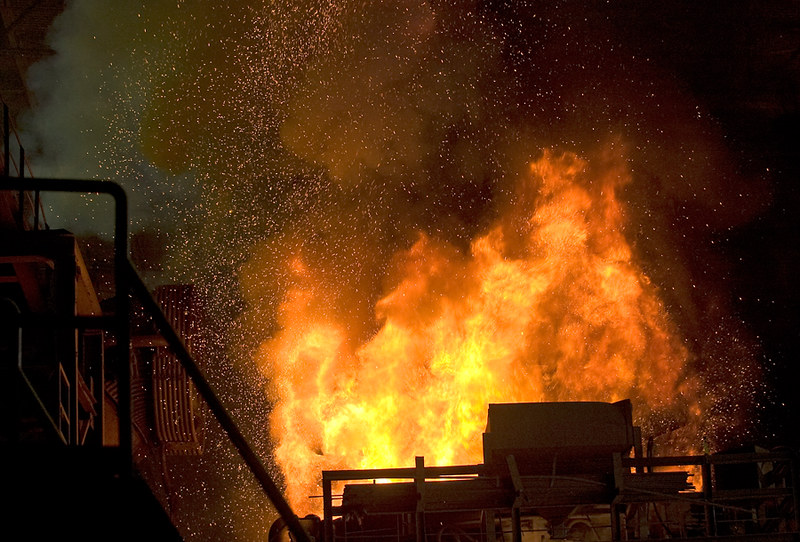India’s existing steel and cement plants will require INR 47 lakh crore ($627 billion) in capital expenditure (CAPEX) to achieve net-zero carbon emissions, according to independent studies by the Council on Energy, Environment and Water (CEEW).
India is the second-largest producer of steel and cement in the world, both of which are emission-intensive processes. The CEEW studies are the first-of-its-kind calculation of the cost of decarbonizing these industries. These also pointed out these steel and cement sectors will need INR 1 lakh crore each year in additional operational expenditure (OPEX) to go net zero.
The CEEW analyses, funded by ‘bp’, an integrated energy company, also found that an 8–25% reduction in steel emissions and a 32% reduction in cement emissions is possible without any price increase by adopting efficient technologies such as waste-heat recovery and energy efficient drives and controls.
Moreover, a 33% reduction in the combined carbon emissions of the steel and cement industries could be achieved with just 8.5% of the total additional CAPEX and 30% of the additional annual OPEX. This reduction can be done without considering the need for carbon capture and with the requisite supply of alternative fuels and raw materials.
Arunabha Ghosh, CEO of CEEW, said, “Decarbonising steel and cement industries will not only help India meet its climate ambitions but also make its industries market competitive and future-ready in a world with increasingly sustainability-driven regulations.”
CEEW’s assessment indicates that the Indian steel industry emitted 297 million tonnes of CO₂ in 2021-22 in crude steel production. That translates to 2.36 tonnes of CO₂ emissions per tonne of crude steel (2.36 tCO₂/tcs) compared to the world average of 1.89 tCO₂/tcs. The cost of producing this steel would increase with the tightening of emission intensity limits.
The study found that near-net-zero steel could cost 40–70% more than the steel produced conventionally, depending on the production route taken, the technology chosen, and the prevailing costs of carbon capture, utilization, and storage (CCUS). CCUS will be critical for decarbonizing the steel industry with a potential to abate as much as 56% of the emissions generated from the sector. But CCUS is still in its nascent stages and will need to be tested at scale before implementation.
The Indian cement industry is among the most energy-efficient in the world. However, apart from the use of fossil fuels, carbon emissions are inherent to the production process due to limestone processing. CEEW assessment indicates that the industry emitted 218 million tonnes of CO2 while producing 337 million tonnes of cement in 2018-19.
The study shows that about 50% of cement plants in India need access to CO2 pipelines for carbon capture and storage. These pipelines can be constructed using existing natural gas pipelines’ right-of-way. Without such pipelines, these plants cannot opt for CCS.
Sashi Mukundan, president of BP India and senior vice president of BP Group, said, “The Indian industry’s transition to net zero is complex and requires technology advancements and policies that will give companies across the value chain the confidence to act. bp’s partnership with CEEW focuses on optimizing pathways to net-zero for the hard-to-abate sectors in support of our strategy to help decarbonize carbon-intensive sectors.”
Hemant Mallya, Fellow, CEEW, said, “Achieving net-zero target for India’s steel and cement industry will require a concerted effort in developing pathways for carbon capture, utilization and storage. Lowering of costs for carbon capture and green hydrogen production, and development of underground carbon dioxide storage sites are essential to achieving this objective.”
To achieve a net-zero steel and cement industry, the CEEW studies recommend the use of the best available energy-efficient technologies to reduce emissions at lower costs since all the energy-efficiency measures are already commercially available. Further, incentivizing renewable energy will play a pivotal role in decarbonization through lower or no transmission charges at the central and state levels.
The study also recommends that the government of India should develop a policy for and expedite the establishment of a CCUS ecosystem to abate more than half of the emissions from the existing steel and cement plants. Since hydrogen will play a key role in its implementation, the next phase of the National Green Hydrogen Mission should focus on this agenda.
This content is protected by copyright and may not be reused. If you want to cooperate with us and would like to reuse some of our content, please contact: editors@pv-magazine.com.









By submitting this form you agree to pv magazine using your data for the purposes of publishing your comment.
Your personal data will only be disclosed or otherwise transmitted to third parties for the purposes of spam filtering or if this is necessary for technical maintenance of the website. Any other transfer to third parties will not take place unless this is justified on the basis of applicable data protection regulations or if pv magazine is legally obliged to do so.
You may revoke this consent at any time with effect for the future, in which case your personal data will be deleted immediately. Otherwise, your data will be deleted if pv magazine has processed your request or the purpose of data storage is fulfilled.
Further information on data privacy can be found in our Data Protection Policy.